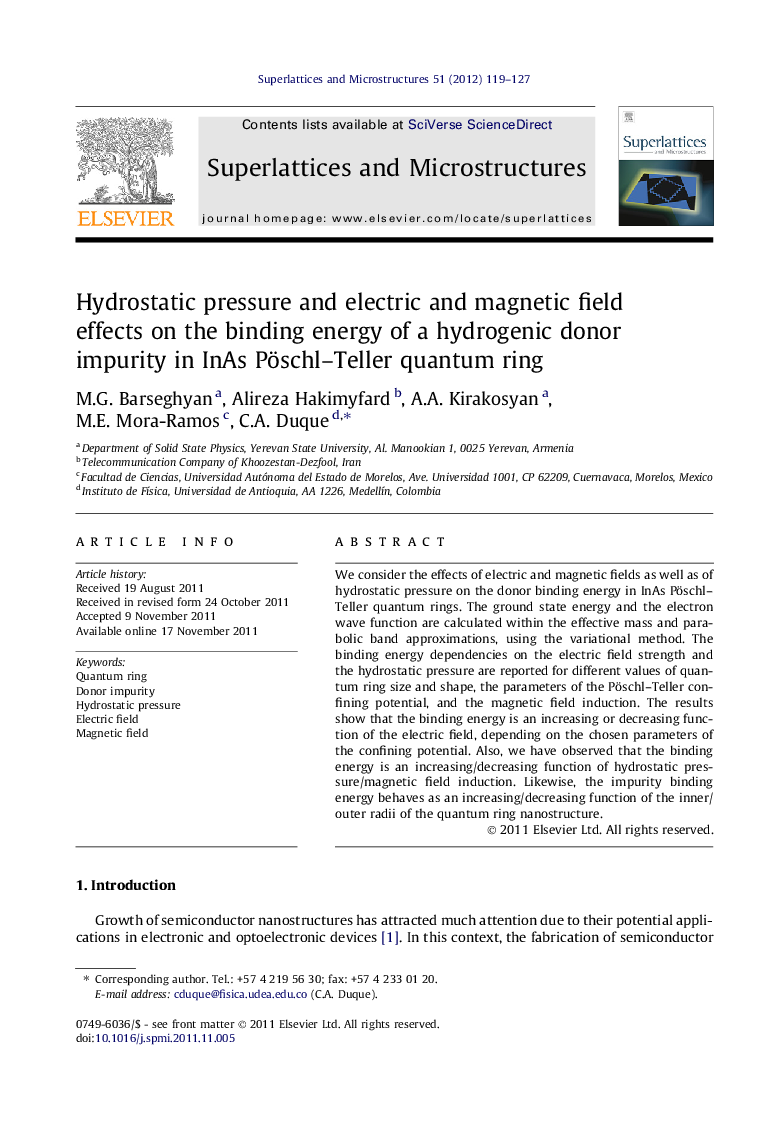| Article ID | Journal | Published Year | Pages | File Type |
|---|---|---|---|---|
| 1554159 | Superlattices and Microstructures | 2012 | 9 Pages |
We consider the effects of electric and magnetic fields as well as of hydrostatic pressure on the donor binding energy in InAs Pöschl–Teller quantum rings. The ground state energy and the electron wave function are calculated within the effective mass and parabolic band approximations, using the variational method. The binding energy dependencies on the electric field strength and the hydrostatic pressure are reported for different values of quantum ring size and shape, the parameters of the Pöschl–Teller confining potential, and the magnetic field induction. The results show that the binding energy is an increasing or decreasing function of the electric field, depending on the chosen parameters of the confining potential. Also, we have observed that the binding energy is an increasing/decreasing function of hydrostatic pressure/magnetic field induction. Likewise, the impurity binding energy behaves as an increasing/decreasing function of the inner/outer radii of the quantum ring nanostructure.
► The binding energy is an increasing or decreasing function of the electric field. ► The binding energy is an increasing function of hydrostatic pressure. ► The binding energy is a decreasing function of magnetic field induction. ► The binding energy is an increasing function of the inner radii of the ring. ► The binding energy is a decreasing function of the outer radii of the ring.
